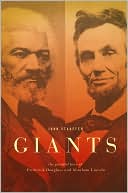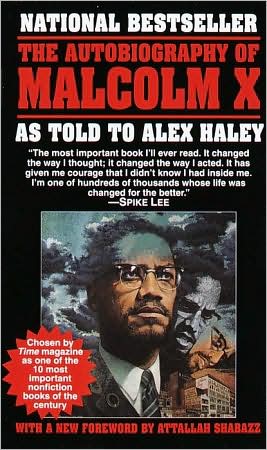Embodied Care: Jane Addams, Maurice Merleau-Ponty, and Feminist Ethics
Hamington argues that human bodies are "built to care"; as a result, embodiment must be recognized as a central factor in moral consideration. He takes the reader on an exciting journey from modern care ethics to Merleau-Ponty's philosophy of the body and then to Jane Addams's social activism and philosophy. The ideas in Embodied Care do not lead to yet another competing theory of morality; rather, they progress through theory and case studies to suggest that no theory of morality can be...
Search in google:
Hamington argues that human bodies are "built to care"; as a result, embodiment must be recognized as a central factor in moral consideration. He takes the reader on an exciting journey from modern care ethics to Merleau-Ponty's philosophy of the body and then to Jane Addams's social activism and philosophy. The ideas in Embodied Care do not lead to yet another competing theory of morality; rather, they progress through theory and case studies to suggest that no theory of morality can be complete without a full consideration of the body.
Embodied Care\ Jane Addams, Maurice Merleau-Ponty, and Feminist Ethics \ \ By MAURICE HAMINGTON \ University of Illinois Press\ Copyright © 2004 Board of Trustees of the University of Illinois\ All right reserved.\ \ Chapter One\ The Landscape of Current Care Discourse \ A chapter in American history about something that appears to be a quintessentially noncaring struggle for power reveals the pervasive significance of care. In the 1840s Frederick Douglass (1818-95) became a powerful force for the abolitionist movement through his brilliant oratory and captivating writing. Douglass addressed social justice in his speaking tours, but he knew that his message had to bridge the tremendous gap between his experiences and those of white audiences in New England and the Midwest. His dark skin elicited objectification: "I was generally introduced as a 'chattel'-a 'thing'-a piece of southern 'property'-the chairman assuring the audience that 'it' could speak." Douglass had been a slave and knew the violence of living as a powerless member of society. In his autobiography he identifies the turning point of his life as a moment when he physically stood up to his owner, Covey. His righteous retaliation was transformative, and Douglass universalized the experience: "A man, without force is without the essential dignity of humanity."\ Though it may appear odd to begin a chapter on care with a historical figure who is associated with the use of rights, power, and politics, I contend that Douglass's writings and speeches also employ care, particularly given the entire sweep of his message. Douglass did not merely articulate an abstract treatise on political philosophy meant to sway the moral calculations of the audience. He used personal examples with which his audience could identify, at least partially, thus creating the context for connection and empathy. One indication of Douglass's attempt to make a personal connection is his decision to write three autobiographies rather than one. His evolving thoughts on abolition led to new interpretations of his life, but each biography is grounded in his experiences. Douglass shares his personal story to connect with his readers while making his political plea. For example, early in The Narrative Douglass recounts the whipping his beloved Aunt Hester received:\ Before he commenced whipping Aunt Hester, he took her into the kitchen, and stripped her from neck to waist, leaving her neck, shoulders, and back, entirely naked. He then told her to cross her hands, calling her at the same time a d-d b-h. After crossing her hands, he tied them with a strong rope, and led her to a stool under a large hook in the joist, put in for the purpose. He made her get upon the stool and tied her hands to the hook. She now stood fair for his infernal purpose. Her arms were stretched up at their full length, so that she stood upon the ends of her toes. He then said to her, "Now, you d-d b-h, I'll learn you how to disobey my orders!" and after rolling up his sleeves, he commenced to lay on the heavy cowskin, and soon the warm, red blood (amid heart-rendering shrieks from her, and horrid oaths from him) came dripping to the floor. I was so terrified and horror-stricken at the sight, that I hid myself in a closet, and dared not venture out till long after the bloody transaction was over.\ In Douglass's wrenching witness, the reader is drawn into the lurid details of Hester's pain and her young nephew's fear. It is unlikely that many who read this account or hear it spoken have experienced a whipping of this magnitude, but everyone has experiences of fear and pain that can provide the substance for a visceral reaction. It is this visceral response that provides a physical (embodied) bridge to the compassion and sympathy that Douglass hoped to elicit in his audience. Indeed, to hear this account and not wince with disgust might spur an accusation of noncompassion. Douglass wanted to garner a sympathetic response to make the kind of compassionate connection that would invigorate action on behalf of his cry of injustice.\ Philip S. Foner attests to the effectiveness of Douglass's rhetoric in The Life and Writings of Frederick Douglas, which collects a number of firsthand accounts of Douglass's speaking skills. These accounts indicate that Douglass was capable of eliciting laughter, suspense, and tears from his audience as he interjected his personal stories with abolitionist rhetoric. Eric Sundquist argues that it was his ability to mix a moral message with personal narrative that made Douglass a successful orator and writer: "Douglass's blending of his campaign for black freedom and black rights with a telling of his own representative story constitutes the key to his own rise to self-possession and historical greatness. When he transfigured the text of his scarred slave's body into the Narrative, Douglass changed 'property in man' into property in himself, as it were, and created a public 'American' self." Sundquist finds the "language of revolutionary liberation and the language of sentiment" virtually synonymous. A personal investment that comes through caring is a necessary element in the kind of deep social change that the abolitionist movement sought. Social movements are virtually always accompanied by passions that are fueled by personal connections and experiences. As Joan Tronto argues, "Care is a way of framing political issues that makes their impact, and concern with human lives, direct and immediate. Within the care framework, political issues can make sense and connect to each other. Under these conditions, political involvement increases dramatically." Douglass's tales of physical pain, hunger, shame, and anger went beyond the direct experiences of most who heard them, yet as human beings, all had experienced analogous feelings on which their moral imaginations could draw to sympathize with this one man's plight. Furthermore, in delivering his speeches, Douglass's physical presence added to the sentiment of the message by forcing the audience to confront the face and body of their abstract stereotype of the Negro slave. The body standing in front of them, despite its differences from their own, gave the audience a context for commonality because it had a face, arms, legs, facial expressions, and hand gestures and spoke of recognizable emotions such as fear, pain, and joy.\ In William Garrison's commentary on Douglass's first abolitionist speech, the physical presence of the speaker is given equal status with the message: "I shall never forget his first speech at the convention-the extraordinary emotion it excited in my own mind-the powerful impression it created upon a crowded auditory, completely taken by surprise-the applause which followed from the beginning to the end of his felicitous remarks.... There stood one, in physical proportion and stature commanding and exact-in intellect richly endowed-in natural eloquence a prodigy." Certainly Garrison was an accomplished orator and could have delivered an equally spirited speech, but the abolitionists recognized the significance of having the audience hear from, and therefore make a connection with, a freed slave. The connection was not always consciously made, but it could be felt and understood in the bodies of those listening. The messenger as well as the message contributed to the connection. When Douglass spoke of his childhood as a slave, the audience could share in the embodied understanding of youthful experiences. It is unlikely that the attendees would be compelled to care simply because of some abstract moral injunction, but the physical presence and personal narrative created a possibility for a human connection: a significant participant in caring relations that could not take place in any other way. Hearing Douglass speak provided more understanding than could a mere collection of facts about a freed slave. There was an affective connection with the audience. The lives of those in attendance were disrupted to an extent that propositional knowledge could never match.\ Michael Meyer, who edited a selection of Douglass's works, acknowledges the significance of the physical connection with the former slave: "His mostly white audiences were confronted with an articulate, intelligent, handsome man who gave the lie to the shuffling, dark stereotypes propagated by proslavery advocates." This confrontation combined with Douglass's personal stories to create an opportunity for the audience to care in ways that they could not always recognize consciously. Douglass did not make a direct plea for caring. He spoke of justice and moral indignation. In the midst of arguments about justice and rights, however, care is present as a subtext. Caring knowledge and caring imagination would help animate both empathy and the subsequent possibility of action on the part of Douglass's audiences. The moral potential of human connection through physical and metaphorical presence should not be underestimated.\ * * *\ The rest of this chapter will fulfill three important functions. First, it will clarify the definition of care that will be elaborated throughout this book by contrasting my project with existing discourse that focuses largely on creating a theory of morality, or "care ethics." Recall my definition of care: an approach to individual and social morality that shifts ethical emphasis and consideration to context, relationships, and affective knowledge in a manner that can be fully understood only if its embodied dimension is recognized. Care is a complex intertwining of caring habits (embodied practices of interaction), caring knowledge (the embodied understandings instantiated through habits), and caring imagination (extrapolations from embodied knowledge to understand situations beyond our immediate experience and to imagine caring courses of action). Although I also draw from each of these approaches, I will differentiate my views from some of the current schools of thought on care ethics. Because they lack a connection to the body, the categories, metaphors, and vocabulary of existing moral theories cannot fully explicate care. Care has the potential to challenge what constitutes the traditional moral domain in large part because of its affective epistemology (caring knowledge). Following Kant's dictum that "reason's proper function is to produce a good will," much of Western tradition views morality as a rational outcome of the mind. I suggest instead that the human capacity to care rests largely on a kind of embodied knowledge that defies easy reduction to detached theories of ethics and epistemology. Care is more than the basis for an ethical theory; it is a basic aspect of human behavior integral to our interrelationships. Care is facilitated by our corporeal existence, yet it can be developed or retarded by the practices we adopt. In this respect, care is linked to the habits our bodies develop. Care requires activities of the mind and body in a way that traditional categories of moral philosophy are ill equipped to conceive.\ This chapter's second function will be to survey the current, predominantly feminist literature on care ethics by organizing various perspectives into clusters or constellations of thought. In the short time that care has been a part of moral philosophy's vocabulary, it has generated a great deal of discussion, both favorable and unfavorable. Despite some superficial analyses that lump them all together, theorists amenable to care have adopted divergent perspectives. For example, Carol Gilligan and Nel Noddings are often cited as the founding mothers of the current wave of care discussions, and indeed their initial publications on care were written within a few years of each other, but they have different academic backgrounds that lead their versions of care in divergent directions. Rather than simply review each author's position, I have clustered the schools of thought on care around important themes that are more prevalent in some writers' works than in those of others.\ As an outgrowth of clarifying my definition of care, the third function of this chapter will be to elucidate the normative dimension of care. Critics often dismiss care ethics as ambiguous. When facing the question, "What ought I to do?" the deontologist and the teleologist have concrete responses, whereas the care ethicist equivocates. This equivocation should not be mistaken for relativism. Care ethics illuminates the aspects of moral dilemmas to which we should attend (e.g., the relational or emotive aspects) but has no formulaic response at the abstract or theoretical level. Because they present a limited number of variables, artificial cases make for an awkward application of care ethics. The care response is much clearer, however, when the individual is part of a lived context. As we move through this book, the normativity of care will become more defined, but not in a prescribed way. In the following section I will identify what normativity exists among feminist care ethicists and augment that in the next chapter by exploring what embodiment adds to the normative thrust of care. I begin this clarification by offering a brief background to care ethics.\ Feminist Origins of Modern Care Discourse\ Although a groundswell of work was leading to the realization that care should be given greater attention, the 1982 publication of Carol Gilligan's In a Different Voice: Psychological Theory and Women's Development may be seen as the landmark and perhaps mythologized event that provided the catalyst for focusing attention on care.\ As is often recounted, Gilligan made a significant discovery about an alternative moral voice while working as an assistant to the acclaimed Harvard psychologist Lawrence Kohlberg (1927-87). Kohlberg had devised a widely recognized structure for measuring moral development along a six-stage hierarchy. Kohlberg drew heavily on Jean Piaget's two-stage theory of moral development, Kantian deontological ethics, Rawlsian social contract theory, and utilitarianism for his understanding of ethics. In Kohlberg's hierarchical theory stage 1, "obedience and punishment," and stage 2, "instrumental purpose and exchange," are referred to as preconventional. Self-interest and deference to authority motivate actions in these stages. Stages 3, "mutual interpersonal expectations, relationships, and conformity," and 4, "social systems and conscience," are called conventional and are marked by attempts to conform to society's rules and obligations. Stages 5, "social contract or utility and individual rights," and 6, "universal ethical principles," are the postconventional levels where morality is associated with universal principles exhibited by impartial, autonomous judgments. Kant's deontological ethics of rational principles provides the basis for Kohlberg's highest level of morality.\ \ Continues...\ \ \ \ Excerpted from Embodied Care by MAURICE HAMINGTON Copyright © 2004 by Board of Trustees of the University of Illinois. Excerpted by permission.\ All rights reserved. No part of this excerpt may be reproduced or reprinted without permission in writing from the publisher.\ Excerpts are provided by Dial-A-Book Inc. solely for the personal use of visitors to this web site. \ \
Introduction : care - an evolving definition11The landscape of current care discourse92Merleau-Ponty and embodied epistemology : caring habits and caring knowledge383Caring imagination : bridging personal and social morality614Jane Addams and the social habits of care895What difference does embodied care make? A study of same-sex marriage122Conclusion : experiencing one another, deconstructing otherness, joyfully moving ahead145








